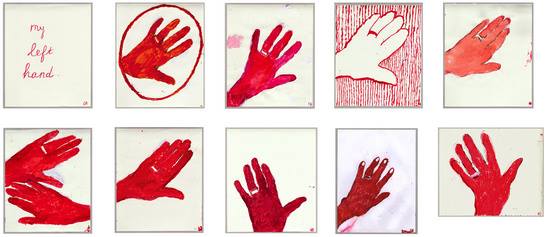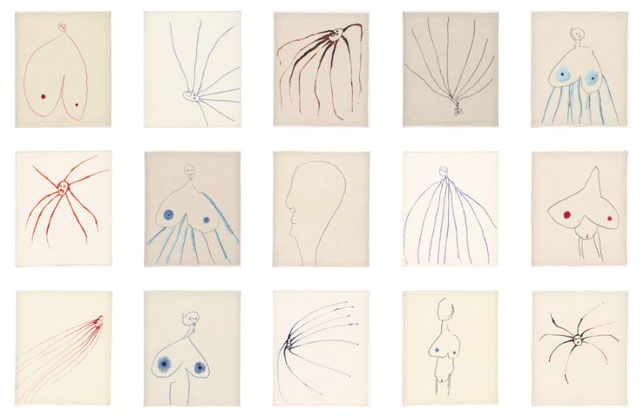Louise Bourgiose
Louise Bourgiose was born in Paris, France, in 1911. She was a French-American artist best known for her large scale sculptures and installations. She was a prolific painter and printmaker.
She studied a variety of themes over the course other long career, such as domesticity, family, sexuality and the body, as well as the subconscious.
While she exhibited her work with the Abstract Expressionists, and hd much in common with the Surrealists and with Feminist Art, she wasn't formally associated with any particular artistic movement.
Her parents ran a gallery, and dealt mostly with antique tapestries.
A few years after her birth, her family moved out of Paris and set up a workshop for tapestry restoration, for which Bourgiose filled in the designs were they had become worn.
As a child, Bourgiose did not meet her fathers expectation for lack of ability, but was loved nonetheless for her spirit and talent. However, throughout her childhood, she continued to the her father for is explosive temper, domination of the household, ad for teasing her in front of others.
In 1930, she entered the Sorbonne to study maths and geometry, which she valued for their stability. Her mothers death in 1932 inspired her to abandon maths, and study art. Her father refused to support her.
She continued to study at art classes, where he was told by Fernard Léger she wasn't a painter, but a sculptor.
She graduated Sorbonne in 1935, and began studying art in Paris.
Bourgiose had a desire for first hand experience, and frequently visited studios in Paris, learning techniques from the artists and assisting with exhibitions.
She briefly opened a print shop next to her fathers tapestry workshop. Her father would help her as long as she entered into a commerce driven profession. It was here that she met her husband, Robert Goldwater. They later got married and emigrated in 1938 to New York, where Bourgiose attended the Art Students League of New York, studying painting under Vaclav Vytlacil, also producing sculptures and prints.
For Bourgioe, the 1940's represented the difficulties of a transition to a new country, and the struggle to enter the exhibition world of New York.
In 1954, she joined the American Abstract Artists group, where she befriended artists such as Bennett Newan, Al Reinhardt, mark Rothko, Willem De Kooning, and Jackson Pollock.




No comments:
Post a Comment